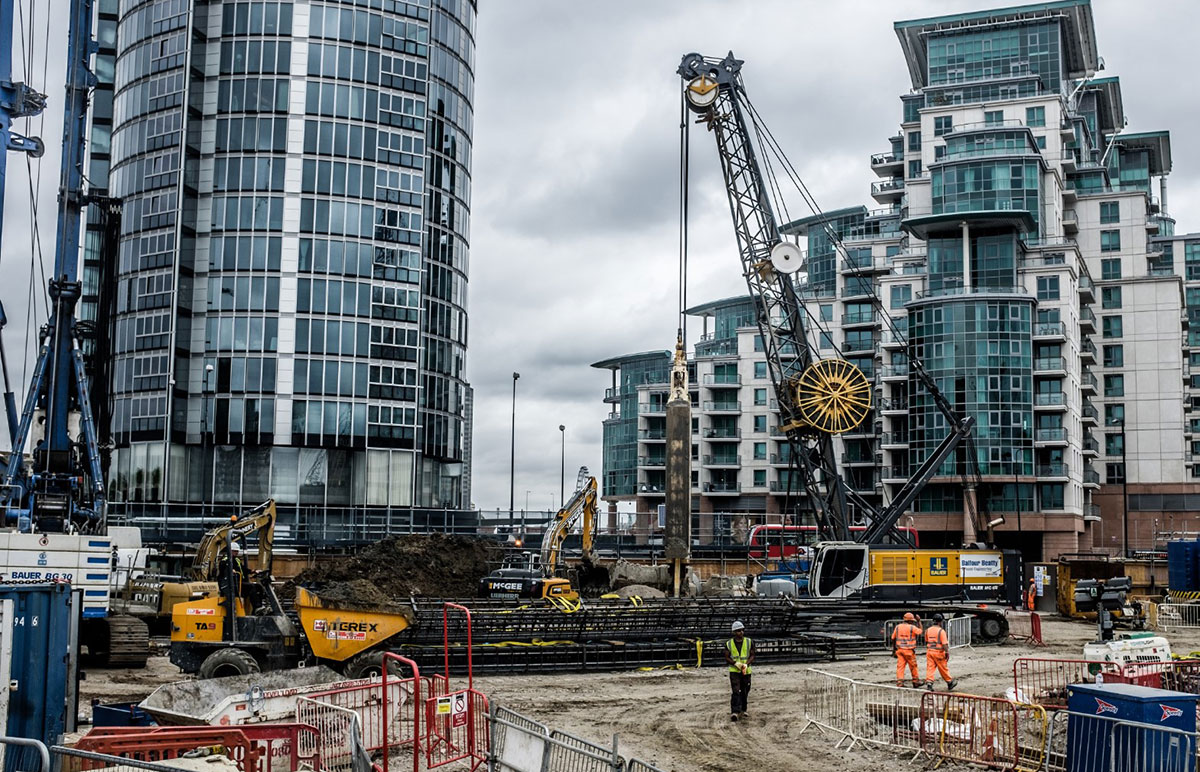8 Simple Techniques For Geotheta
8 Simple Techniques For Geotheta
Blog Article
Our Geotheta Diaries
Table of ContentsSome Ideas on Geotheta You Should KnowThe 5-Second Trick For GeothetaGeotheta for BeginnersNot known Incorrect Statements About Geotheta Our Geotheta PDFs

They conduct website examinations, gather examples, perform lab tests, and examine data to examine the viability of the ground for building and construction projects - Engineer of Record. Based on their findings, geotechnical engineers offer suggestions for structure layout, slope security, preserving structures, and mitigation of geotechnical risks. They team up with other professionals, such as engineers, architectural designers, and building teams, to ensure that geotechnical considerations are incorporated right into the overall task style and application
By examining the behavior and residential or commercial properties of soil and rock, they can determine potential geotechnical risks such as landslides, soil settlement, or slope instability. Their competence assists stop failings or crashes that could threaten lives and property. Below are some in-depth tasks and duties of a geotechnical designer: Site Investigation: Geotechnical designers conduct website investigations to gather data on subsurface problems.
They translate the information to comprehend the residential or commercial properties and actions of the soil and rock, including their stamina, permeability, compaction qualities, and groundwater problems. Geotechnical Evaluation and Layout: Geotechnical engineers evaluate the data collected during website investigations to analyze the stability and suitability of the site for construction jobs. They carry out geotechnical estimations and modeling to evaluate variables such as birthing ability, negotiation, incline security, lateral earth pressures, and groundwater flow.
Geotheta Fundamentals Explained
Foundation Layout: Geotechnical engineers play an important duty in designing foundations that can safely sustain the intended framework. They evaluate the dirt problems and tons requirements to figure out the ideal structure kind, such as shallow foundations (e.g., footings), deep structures (e.g (https://www.tumblr.com/geotheta/757702666915840000/geotheta-has-grown-exponentially-since?source=share)., piles), or specialized methods like dirt renovation. They think about elements such as settlement limits, birthing capacity, and soil-structure communication to create optimal structure layouts
They review building plans, monitor site activities, and perform field examinations to validate that the layout recommendations are followed. If unexpected geotechnical issues arise, they assess the scenario and provide suggestions for remediation or changes to the style. Risk Analysis and Mitigation: Geotechnical engineers evaluate geotechnical threats and threats linked with the job site, such as landslides, liquefaction, or soil disintegration.

Collaboration and Interaction: Geotechnical designers work very closely with other specialists entailed in a job, such as engineers, architectural engineers, and building and construction teams. Efficient communication and collaboration are important to integrate geotechnical considerations right into the general job design and building process. Geotechnical designers provide technical competence, answer queries, and make certain that geotechnical requirements are satisfied.
More About Geotheta
Below are some kinds of geotechnical engineers: Structure Designer: Foundation engineers focus on developing and assessing foundations for structures. They evaluate the soil problems, lots needs, and website qualities to establish the most ideal structure type and design, such as superficial foundations, deep structures, or specialized strategies like stack foundations.
They evaluate the aspects affecting incline security, such as dirt homes, groundwater problems, and slope geometry, and develop methods to prevent incline failures and mitigate threats. Quake Engineer: sites Earthquake engineers concentrate on analyzing and designing frameworks to endure seismic forces. They assess the seismic risk of a website, evaluate soil liquefaction possibility, and develop seismic style criteria to make sure the safety and resilience of frameworks during quakes.
They execute field testing, accumulate examples, and analyze the accumulated data to identify the soil homes, geologic formations, and groundwater problems at a site. Geotechnical Instrumentation Designer: Geotechnical instrumentation designers concentrate on surveillance and determining the behavior of dirt, rock, and frameworks. They mount and maintain instrumentation systems that keep an eye on aspects such as dirt negotiation, groundwater levels, incline activities, and architectural variations to analyze efficiency and give early cautions of possible issues.
Geotheta - Questions
They conduct tests such as triaxial tests, loan consolidation examinations, direct shear tests, and permeability tests to collect data for geotechnical analysis and layout. Geosynthetics Designer: Geosynthetics designers focus on the design and application of geosynthetic products, such as geotextiles, geogrids, and geomembranes. They make use of these materials to enhance dirt security, reinforce slopes, give drain remedies, and control disintegration.
They often tend to be investigative people, which suggests they're intellectual, introspective, and investigative. They are curious, methodical, logical, logical, and logical. A few of them are also social, meaning they're kind, generous, participating, individual, caring, valuable, understanding, sensible, and friendly. Does this seem like you? Take our totally free job test to find out if geotechnical engineer is one of your leading profession matches.
In the office setting, geotechnical designers utilize specialized software tools to execute computations, produce designs, and evaluate data. They prepare reports, testimonial project specs, connect with customers and staff member, and coordinate job tasks. The office setup gives a helpful atmosphere for research, analysis, and cooperation with other experts associated with the project.
Get This Report on Geotheta
They often check out task sites to perform site examinations, assess geotechnical problems, and gather information for analysis. These brows through include traveling to various areas, sometimes in remote or difficult surfaces. Geotechnical designers may carry out dirt sampling, conduct tests, and screen building and construction activities to make certain that the geotechnical facets of the job are being implemented appropriately.
Geotechnical designers additionally function in specialized geotechnical research laboratories. Geotechnical lab designers function thoroughly in these settings, handling screening tools, running tools, and videotaping information.
Report this page